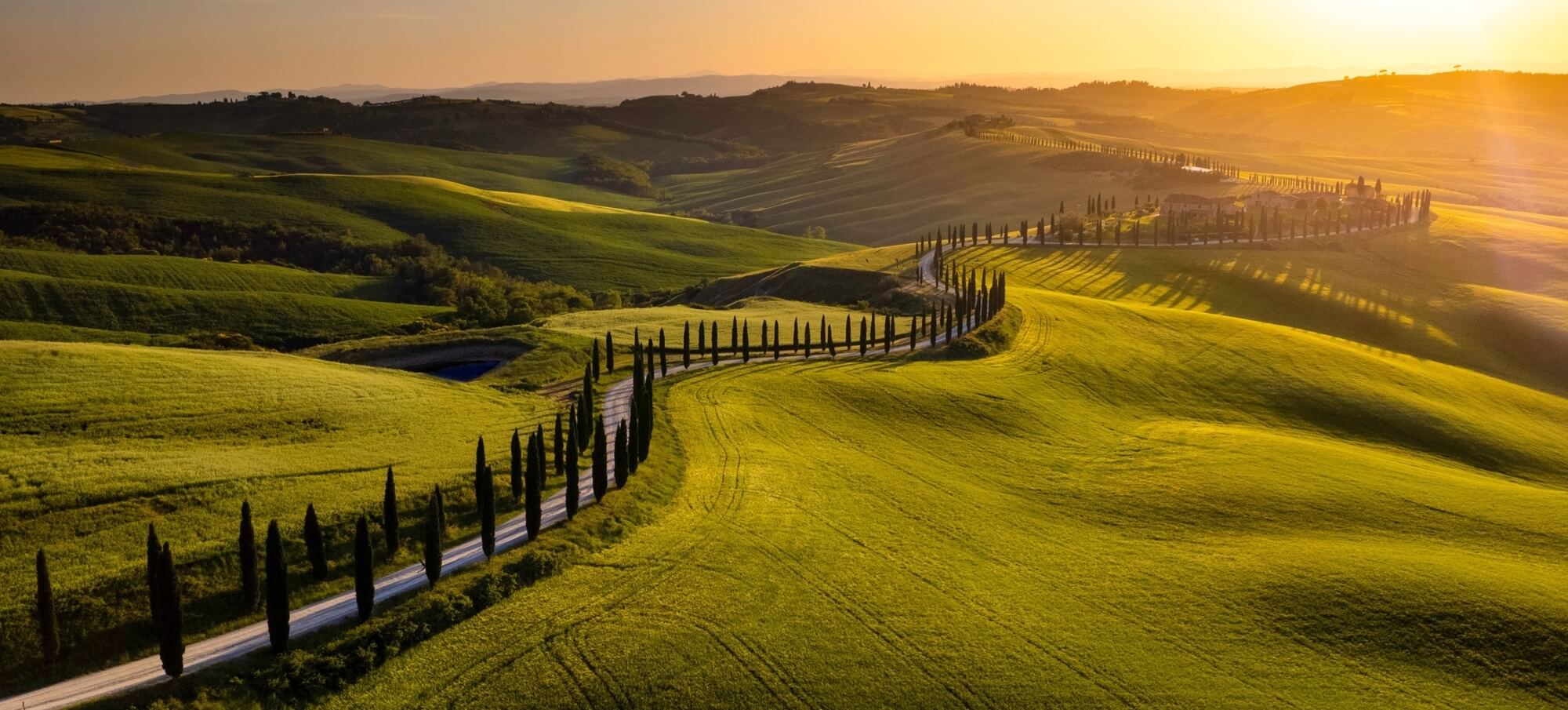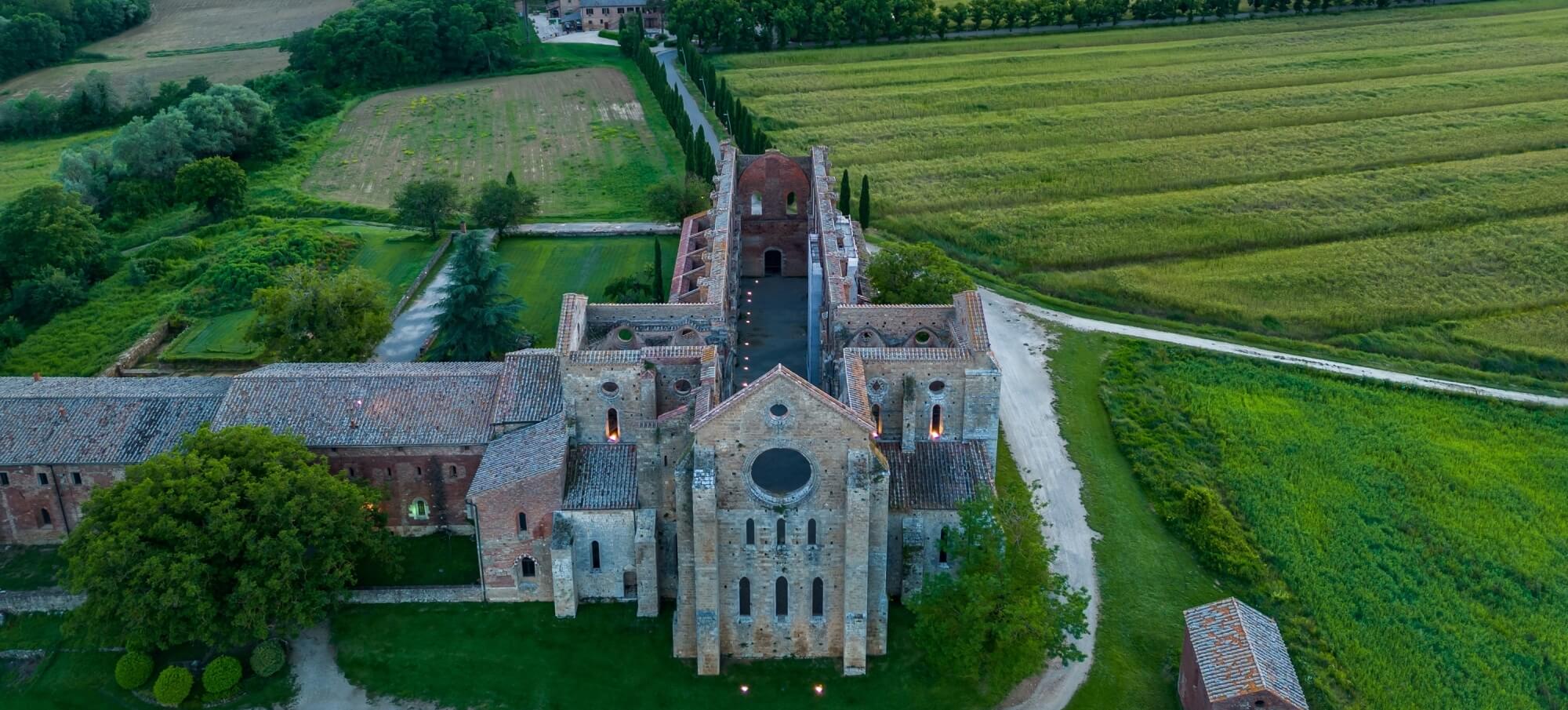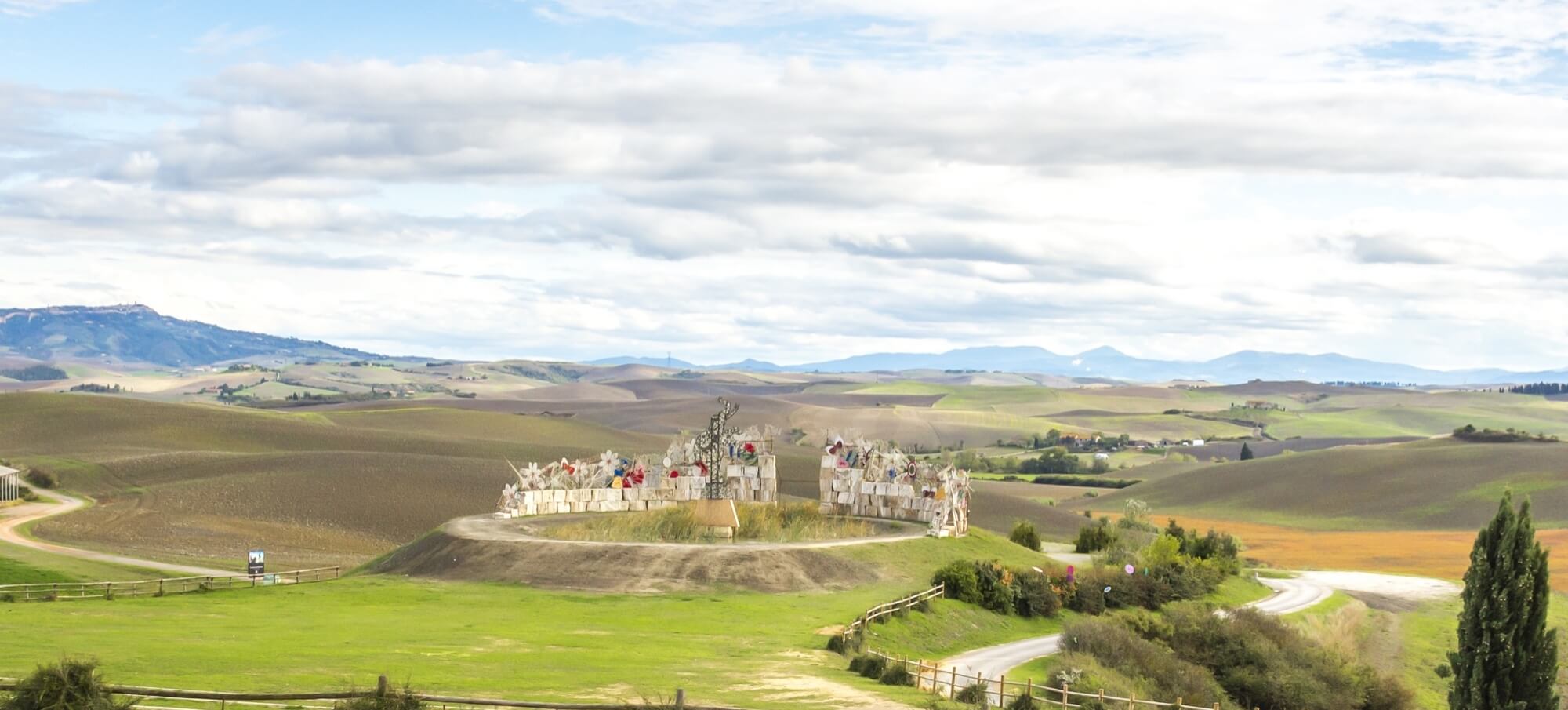In search of revelations – uncharted Tuscany
A region with a strong identity
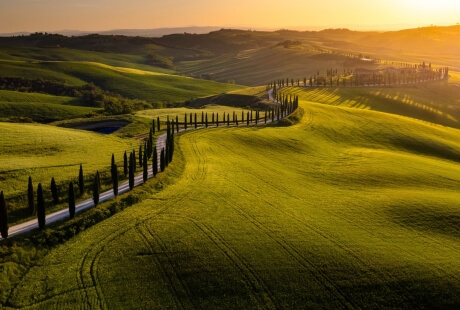
Loved by writers, poets and artists, Tuscany is always hot on the agenda of discerning travellers. Few regions can boast such a varied, appealing gamut of historic cities, beguiling landscapes and seriously delicious food traditions. After having indulged in the cultural powerhouses provided by big guns like Florence and Siena, or zigzagged on a vespa along cypress-lined routes in the Chianti or Val d’Orcia areas, there is still plenty of room for exciting revelations.
Tuscany is, in fact, replete with ancient pathways, secluded corners and delightful secrets, revealing a region with a strong identity, one that has shaped eternal masterpieces and keeps on delivering.
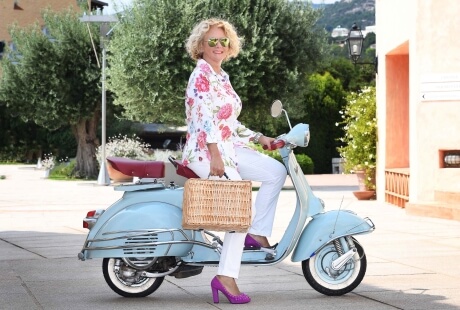
1. The vespa of your dreams – the Museo Piaggio
Audrey Hepburn and Gregory Peck riding along the streets of the eternal city is a familiar, nostalgic scene of the 1953 film “Roman Holidays”. We can all add a little “dolce vita” into our routine (sure, that was another film!) and admiring the creative process behind one of Italy’s most iconic products will do just that. Head to the Museo Piaggio in Pontedera, by Pisa, to learn about this quintessential Italian icon.
You will see how it all started, what models were – and are – being produced, contemplating the sleek, shiny bodies of colourful works of arts, one-of-a-kind pieces like the Vespa Dali, Vespa Ferrari, Vespa Jeans and other unique pieces created by clever artists. Vespa mopeds – but also Moto Guzzi and Gilera – are all on display, embodying the miracles brought to life by talented minds across more than 130 years. The museum opened in 2000 and was totally refurbished in 2018, hosting a rich historical archive, exhibition spaces, events and presentations, activities for schools and a lovely bookshop. What an exciting place!
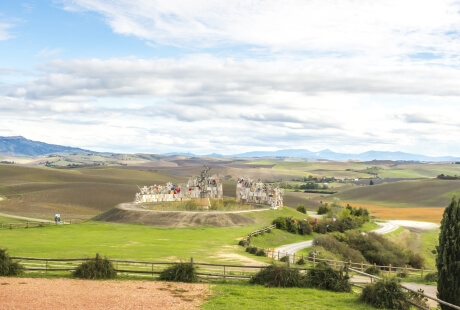
2. Music for the soul – Lajatico
Set between Valdera and Val di Cecina, between Pisa and Volterra, Lajatico may be known as the birthplace of the singer Andrea Bocelli, but once you visit this splendid town you’ll realize it’s a marvellous gem that hides many surprises. A cypress-lined alley leads to the centre of town, the borgo and the castle, where contemporary artworks mingle with medieval buildings. Astrophiles will admire the sky at night at the local observatory, while the Rocca di Pietracassia is a medieval fortress that dominates the area and offers spellbinding views of the Tuscan countryside. Trina d’Irlanda, or Lajatico lace, is an early 20th c. lacing type that was introduced by a local lady after a trip to Ireland: best employed with linen and silk, its precious designs embellish and enrich various garments.
The Teatro del Silenzio is, however, Lajatico’s most celebrated site: the spectacular amphitheatre is not made of brick or concrete, but it is set on the hills, surrounded by a natural lake and a contemporary sculpture that changes every year. The brainchild of tenor Bocelli and the architect Alberto Bartalin, it was created in 2006, blending with the natural background in such a serene manner that the concerts held here – only once a year – will elevate the experience to a sublime one. A harmonious project that makes the place a breath-taking destination.
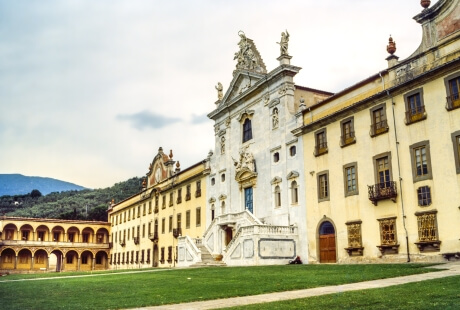
3. Beyond famous sights – the Certosa di Calci
Campo dei Miracoli in Pisa is a stunning site and comprises the famous leaning tower, but the beauties of the area cannot be confined to a single place, albeit a magical one. West of the city lies the Certosa di Calci, a fabulous monumental complex dating back to 1366. The Archbishop of Pisa commissioned it and it now hosts the Museum of the Certosa and the Natural History Museum of the University of Pisa. The complex itself is mesmerising and it was once home to 14 monks who lived in seclusion and only had lunch with the others on Sundays.
Every chapel is decorated and the floors of the complex feature Carrara marbles in the shades of grey, white and black. The stones were laid taking perspective into account, so the layout is different according to the viewpoint. The sacristy contains a fabulous 12th c illuminated manuscript depicting the Bibbia Atlantica, making the overall experience truly soul-enriching. Make the Certosa your next stop on your Tuscan journey of discovery.
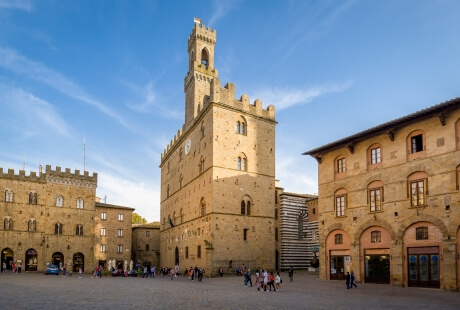
4. The city of alabaster – Volterra
Perched high on a hill, Volterra is the quintessential medieval town that reveals its layers of history, magnetic feel, fascination and cultural riches as you get closer to it. Its perfectly intact walls invite you to explore its quaint alleys and its Pinacoteca Comunale contains some fine works by Rosso Fiorentino, Domenico Ghirlandaio and Luca Signorelli, among others.
Volterra is also the town of alabaster, and the Ecomuseo dell’alabastro illustrates this clearly. Close to the Pinacoteca, the museum revolves around a captivating setting inside the medieval Torre Minucci, which illustrates the history of this fascinating material from the Etruscan times to the present day.
The perfect opportunity to learn about the entire process of sourcing the material and modelling it, with clear examples of how workshops functioned. Items on display include the only examples of medieval alabaster specimens, plus various 18th and 19th c. sculptures and precious medallions. While you are in town, pay a visit to the splendid Palazzo Pretorio and enjoy the view from the terrace, stretching above the Tuscan hills from a prime position. A compelling sight that will stay in your hearts at length!
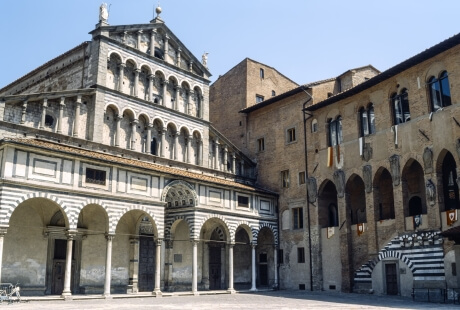
5.The city of enchanted stone - Pistoia
West of Lucca and close to Prato, Pistoia is a pretty city with a splendid medieval centre and several outstanding churches, plus an interesting museum circuit that made it the 2017 capital of culture. And culture is lived throughout Pistoia, from the mesmerising Piazza del Duomo, surrounded by San Zeno Cathedral, Palazzo dei Vecovi, Palazzo Comunale and Palazzo Pretorio. San Zeno cathedral, whose façade is decorated with a marvellous Andrea della Robbia lunette, entails a stunning interior, while the 14th c. Baptistery, located opposite, was designed by Andrea Pisano. For a glimpse of the town from above, go up its campanile and take it all in. Piazza della Sala is another quaint medieval square that comes alive on market days. Pistoia also has an interesting series of subterranean passageways that date back to the 13th century: you can visit them and learn about life below stairs.
Do not forget the Pistoia lacing museum and the many stunning palazzi that feature various decorations, and also the Museo dello Spedale del Ceppo, a former hospital with decorations by Giovanni della Robbia. Welcome to another jewel in the realm of Tuscan wonders.
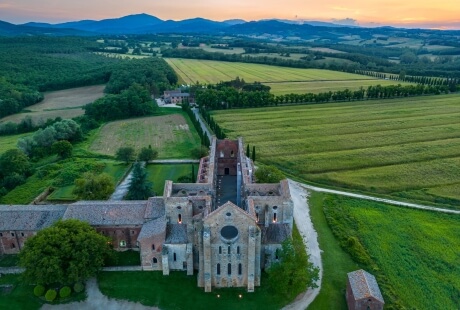
6. Of myths and legends - San Galgano
In the cultural riches that abound everywhere in Tuscany – Toscana ovunque bella is a famous appellation for the region – there always seems to be a hidden surprise, perhaps in the ethereal countryside that makes the region so appealing. Come south of Siena, between the towns of Chiusdino and Monticiano, for a compelling sight: the Abbey of San Galgano is one of the best examples of Italian Gothic-Cistercian architecture. Erected in the 13th c, it was raided a century later and it is now a fascinating roofless church that captivates people’s imagination. Its external walls are intact and you can just make out the frames of the windows that once adorned it; the overall atmosphere is one of peaceful serenity and deep contemplation. Close to the church you will find the Monstesiepi Hermitage, which could be called the Italian “Excalibur”. A local knight, Galgano Guidotti, is sad to have placed his sword in the stone to mark his abandonment of earthly riches to become a hermit. He was proclaimed a saint only three years after his death, in 1185, and the sword is still there for you to see!
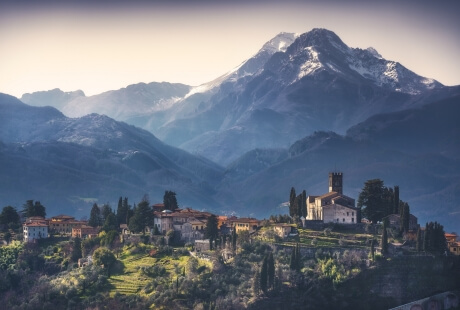
7. From Scotland with love – Barga
These days the whole world may feel like a melting pot, with cultures and traditions merrily mingling and sharing their relevance, but finding foreign connections with the Belpaese always adds appeal to any experience. Charming hilltop towns like Barga, in the Garfagnana area to the north-west of the region, is the authentic Italian borgo where the mind wanders to nonna cooking and Renaissance families displaying their wealth. It is, also, a place where you can find a British red telephone box and hear English being spoken at a surprisingly high rate.
This is because many Italians emigrated to Scotland in the second half of the 19th c. and brought back Caledonian traditions over the years, a thing reflected in the menus served across town, as well. Still, Barga embodies the Tuscan soul through and through, and was so loved by the Italian 19th c. poet Giovanni Pascoli that he moved to the hamlet of Castelvecchio, close to Barga – the home he lived in is still visible.
Everything is charming here, from the elegant Romanesque cathedral to the lovely stone houses, including Museo Cordati, the gallery showcasing works by local 20th c. artist Bruno Cordati. Find time to Indulge in the local cuisine, too, for the Garfagnana offers the best Tuscan recipes that nourish the soul – as well as your bodies.
Travel Tips where to stay
Ask for more info about the best experiences and itinereraries we can design in Tuscany
All contents, photos and texts are subject to copyright. They are only authorised on my website and social media. Ideas can be a source of inspiration, but any unauthorised use of images and texts is strictly forbidden. All rights reserved.
